Traditional Thai massage has been on the menu of almost every spa in the world, from lavish spas of London and Paris to the much smaller and humble spas of Mumbai and Karachi. The origins of the well-acclaimed healing art can be traced as far back as some 2500 years ago. Before we set out to carefully explore the origin and history of the famous massage, we should first have a look at what exactly it is.
What Exactly is Traditional Thai Massage?
Traditional Thai massage is an art and science of relaxing the whole body through gentle pressure and stretching techniques. It’s considered to be an ancient healing practice that originated in India.
Traditional Thai massage seems to follow a different pattern than other available options. It doesn’t share many similarities with Swedish or shiatsu massage techniques, which most westerners are accustomed to. Unlike these techniques where people lie on a bed, a person having a traditional Thai massage lies on the floor and actively participates in the process.
People that undergo Thai massage claim that it relieves stress, boosts energy and enhances athletic performance.
Though originating in India, traditional Thai massage has accepted influences from both Ayurvedic and traditional Chinese medicine.
Traditional Thai Massage Techniques:
As already said, traditional Thai massage is unlike any typical Western-type massage. It doesn’t involve lying on a comfortable massage bed while the massage therapist works on your body muscles and pressure points and kneads them with oil. Instead, in traditional Thai massage, a practitioner uses stretching, pulling, and rocking techniques to relieve stress, promote circulation and increase flexibility, all while you’re lying fully clothed on a mat on the ground.
Keeping all of this in mind, it comes as no surprise that traditional Thai massage is frequently referred to as assisted yoga. Everything about traditional Thai massage is meant to improve the flow of energy in your body.
Practitioners use their fingers, hands, forearms, elbows, and even feet to relieve stress and release tension from your body. The idea behind traditional Thai massage is that energy moves through our bodies along predictable channels or lines called sens. Thai massage therapists move, pull, stretch, and rock your body into yoga-like positions to streamline the flow of energy through sens or energy channels.
It’s the combination of movements, stretching, and pulling that sets traditional Thai massage from the rest of the other massage techniques.
Remember that traditional Thai massage isn’t a passive type of massage. Instead of lying down on the bed, you actively participate in the process.
You should also remember that oil is not part of traditional Thai massage. Instead of kneading your muscles, the practitioner will use his limbs to bring your body into yoga-like positions. They can even resort to pulling, pushing, and stretching your body parts to maintain a pose.
Now that we’re done with the introduction, let’s have a detailed look at the origin and history of traditional Thai massage.
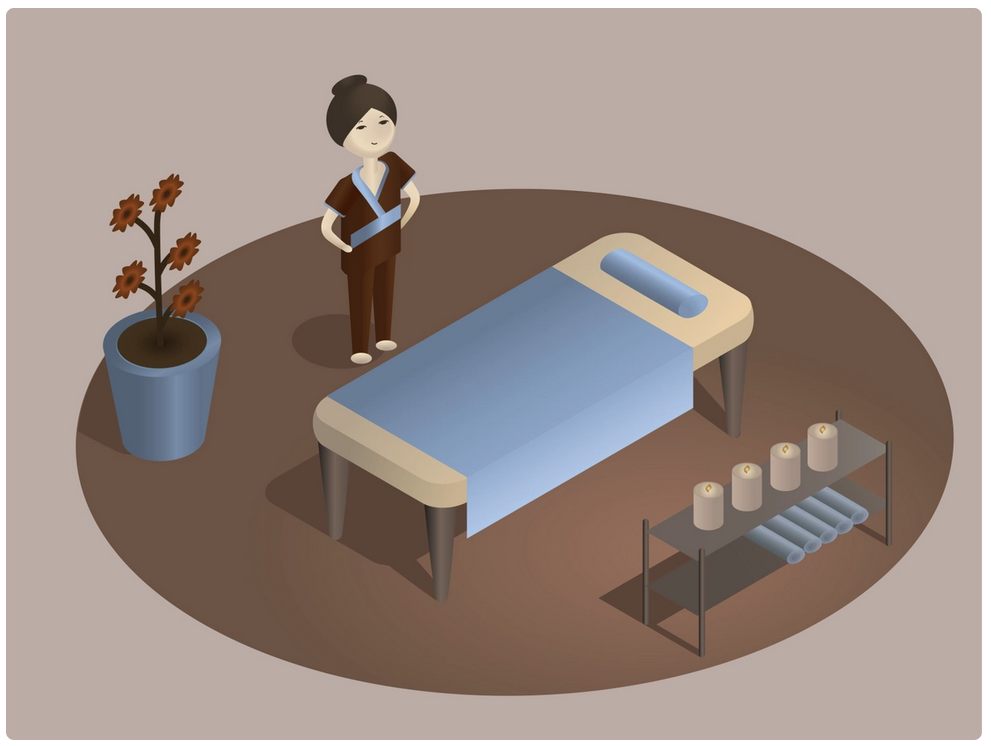
Traditional Thai Massage Benefits
Traditional Thai massage has a broad spectrum of potential benefits. Some of the most important health benefits of traditional Thai massage comprise the maintenance of good health and its ability to treat several health conditions. The most significant benefit of traditional Thai massage is its ability to clear and manage the energy pathways.
Some of the potential benefits of traditional Thai massage are the following:
- Increased ability for movements and control
- Flexibility in the body and movements
- Improvement in postural alignment
- Calms nerves, increases the energy level and imparts a great sense of relaxation
- Helps release emotional distress and stress
- Increases blood circulation
- Improves lymph drainage
- Improves the condition of internal organs
- Helps relieve fatigue, swollen extremities, headaches, and painful joints
Description of Traditional Thai Massage
Traditional Thai massage seems to be a cross between yoga, shiatsu, and acupressure. It’s a good match for those who want to have a better sense of proportion in their bodies. The massage is inspired by Buddhist teachings and consists of rhythmic compressions and stretches that progress slowly along energy lines called sen in Thai. It’s believed that over 70,000 sen are located in the body. Traditional Thai massage applies pressure to the 10 sen out of 70,000, since these 10 are deemed most important. The pressure is applied through thumbs, fingers, hands, elbows, and feet. Practitioners of traditional Thai massage position the body into yoga-like postures and pull, stretch, and gently rock the body to open the joints.
A full traditional Thai massage comprises the following basic positions:
- From the front, anterior, or ventral side of the body while the client lies supine (facing upward)
- From the back, the posterior, or dorsal side of the body while the client lies prone
- From the sides as the client lies on the side
- In the sitting position
One of the most interesting things about Thai massage is that it follows a pattern of sequential movements. Each movement and position is meant to prepare the client for the subsequent movements. The practitioner has to be aware of his and the client’s movements so that the slow rhythm of activities is established and maintained. A continuous flow of sustained pressure along the points ensures that the connective tissue of the muscles softens so that the released energy can run smoothly along the energy lines or sen. The practice also prepares the client for the subsequent large-scale stretches.
Types of Traditional Thai Massage
There are at least two main styles of practice, one is called Northern or Chiangmai and the other is referred to as Southern or Bangkok style traditional Thai massage. The northern variant of traditional Thai massage is considered to be slower and gentler than the latter. The second type is deemed faster and considered to be more intense than the former.
While the southern style is greatly revered and practiced in Thailand, the northern one has drawn the attention of the West, particularly in London and United Kingdom.
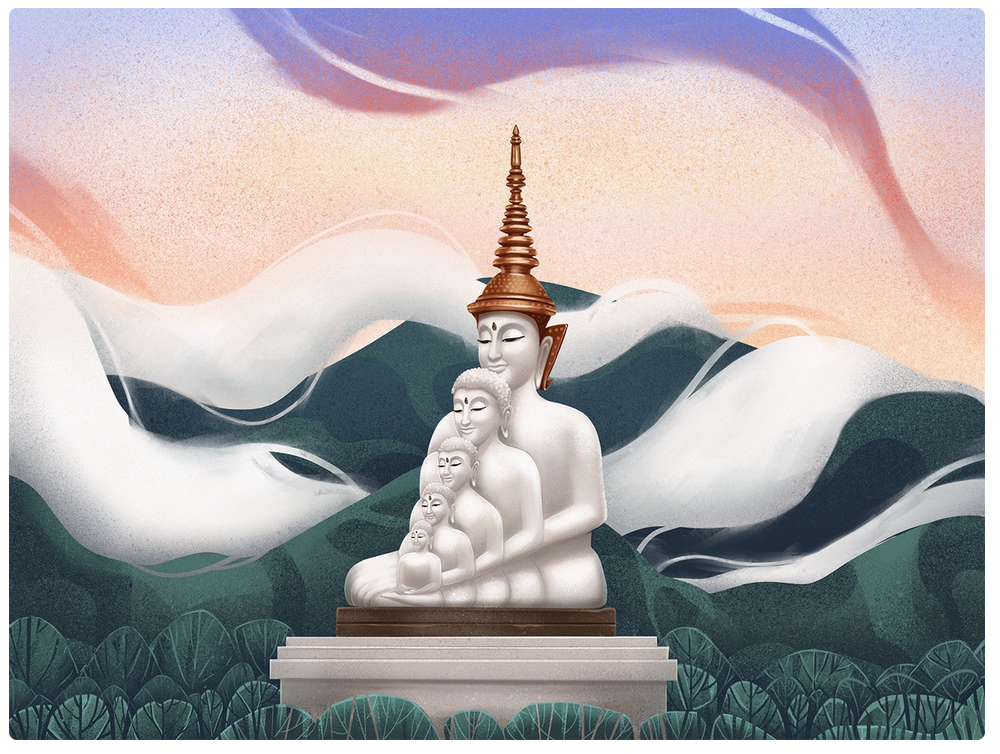
Origin of Traditional Thai Massage
The origin and history of the technique are linked with Buddhism’s expansion from Northern parts of India to Southeast Asia. Buddhism made its way from Northern India to southern India, from where it expanded to Sri Lanka. From Sri Lanka, it spread into Thailand and Burma (now Myanmar). The massage technique was part and parcel of the lives of Buddhists. Essentially, it was an integral part of the belief system of the Buddhist religion.
Only a few people know that it took Buddhism four centuries to reach Thailand. However, the massage technique had reached Thailand much earlier and had gathered immense popularity among the people. The technique is closely related to the Buddhist religion that the practitioner must say a prayer in Pali, the ancient and sacred language of a conservative Buddhist tradition, to the revered inventor of the Thai massage technique, each day before they can start working.
There exists a heated debate as to who created the technique. But most people believe that a monk named Komparaj was the creator of the technique. He also happened to be a personal physician of Buddha.
Komparaj appears to be a minor figure in the Buddhist religion, but his story has been told in many translations of the Buddhist scriptures in the Chinese, Tibetan, and Sanskrit languages. Each of these stories maintains that he was a knowledgeable physician who converted to Buddhism, volunteered his time as a physician to the order, and was a personal friend of Buddha. Most Thai healers believe that he’s the founder of many massage techniques and herbalism practices. Keeping this in mind, we don’t find it astonishing that every practitioner of traditional Thai massage honors the teacher before he starts his day as a practitioner.
It may be interesting to note that the technique was originally developed as a healing art to cure diseases. Contrary to its ancient purpose, it’s now being used as a relaxation technique and doesn’t involve curative purposes.
As said earlier, the technique received a significant influence from both Ayurvedic and traditional Chinese medicine.
To understand the correct historical flow, one must recollect some idea about Thailand’s strategic location between India and China. Thailand received and welcomed people, ideas, and medicine from both countries and enhanced their effects. For a yoga expert, it doesn’t come as a surprise that yoga and traditional Thai massage share many things in common.
History and Survival
It’s astonishing to look at how traditional Thai massage survived. From its first arrival in Thailand, it continued to spread and pass on to generations after generations largely through word-of-mouth. It’s because most people back then didn’t know how to read and write. Realizing the absence of a standard and formal manuscript that described Thai massage in detail, a few monks set out to prepare a medical text that included everything about the technique.
After the medical texts had been prepared, they came to be known as sacred scripts and were kept in the ancient capital of Thailand, Ayutthaya. But in 1767, a Burmese invasion ravaged the city, thus destroying most of those texts.
In 1832, King Rama III ordered the basic principles of traditional Thai massage to be carved into stone in the form of descriptive epigraphs. To ensure the proper safety and survival of the stone epigraphs, he had them placed inside the Bangkok temple, commonly known as Wat Pho. There are a total of 60 carved epigraphs. Half of them describe the front half of the body and the remaining half show the back.
These figures show therapy points along the different energy lines also called sens. Sens comprise the basic building blocks of traditional Thai massage.
Out of these 60 lines, 10 lines are deemed most important and are called sen sib. If these 10 lines are properly massaged, it’s believed that the energy balance of the body restores, diseases are cured, and pain vanishes.
It’s believed that the energy from these lines powers all the physical, emotional, and mental processes of the body. When we restore the energy demand of the body, it starts functioning properly.
Any imbalance in the energy supply and demand of an individual leads to abnormalities in the body’s structure and function, consequently producing diseases. When the energy supply matches its demand, the individual is free from diseases, happy, and full of life.
Wat Pho, the temple that bears the instructions, is one of the most regarded places for Thai massage. It’s an iconic tourist attraction in Bangkok, mainly because of its splendid architecture and historical importance. In addition, it derives its value from being the host of Thai massage practitioners from all over the world, who come to this temple to learn the secrets of traditional Thai massage. No doubt, it’s the most authentic and authoritative source of knowledge for traditional Thai massage practitioners.
While Wat Pho is regarded as the premier Thai massage school, there are a few other schools that offer official training in traditional Thai massage.
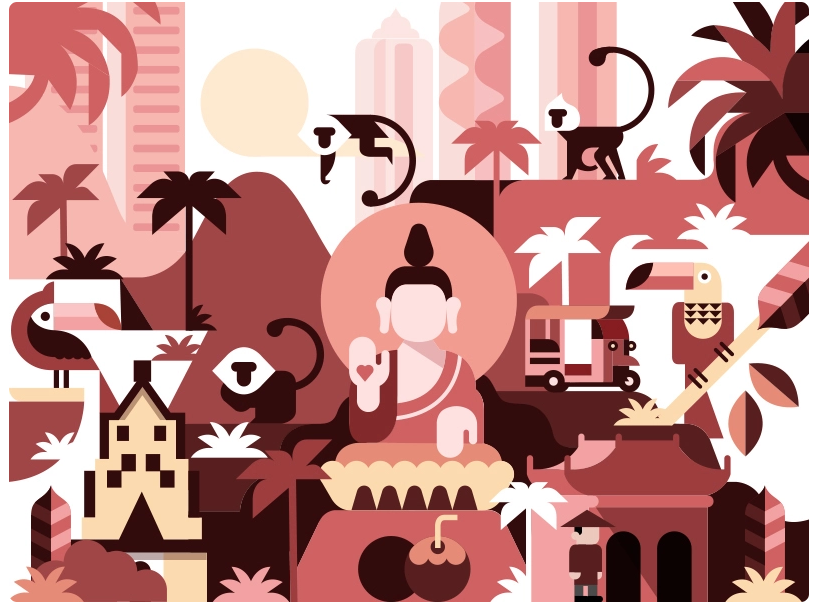
Buddhist Influence
The practice has evolved under the spiritual and religious tenets of Theravada Buddhism and shares a great cultural context with it. In addition, several components of the traditional practice have been found that form the basis of many yoga practices and seated meditation.
In Buddhism, the idea of Metta is highly regarded and revered. Literally, it means “Loving Kindness” and is the core component of Buddha’s guidance for his followers. It’s the part of the everyday life of followers who want to seek greater awareness. Some teachers of Buddhism regard Metta as the “foundation of the world”. According to them, Metta forms the basis of happiness for oneself and others. Traditional Thai massage is regarded to be the practical application of the concept of Metta.
The healing art has always remained associated with monks and monasteries of Thailand. Buddhist philosophy maintains that there are four divine states of mind:
1.Loving Kindness
2.Compassion
3.Vicarious Joy
4.Equanimity
Thai Theravada Buddhism places a special emphasis on the real-world application of the highest ideals, a realization and translation of spiritual philosophy into everyday life activities. In the belief system of Theravada Buddhism, traditional Thai Massage is regarded as a meditative healing practice that benefits both recipients and practitioners. On one hand, the practitioner strives to be in a state of active mindfulness, aware of every moment and breath. For the recipient as well as the practitioner, every movement and position are a source of clear intent and mindfulness.
In the kind of scenario described above, the practitioner can achieve a high level of perception and intuition. Finally, the practitioner is able to detect subtle shifts in the energy state of the individual. He can also notice changes in the mind and body of the client. Consequently, the client can experience a great therapeutic effect.
This philosophy doesn’t promote any dogma. It has universal foundations and is timeless. It focuses on openness, growth, and harmony. It also focuses on the universal energy that forms the basis of life and is required for healing to occur. The practitioner approaches a client with the spirit of love and humility. A massage professional also prays for the highest possible levels of guidance and wisdom.
The goal is to relieve or alleviate the suffering. The practitioner does his or her best to achieve the highest possible results. They apply all of their skills and abilities to the highest of their knowledge.
Indian Influence
There’s no doubt that traditional Thai massage received significant influences from Indian culture and the Hindu religion. Indeed, it incorporates some vedic principles of life elements and life energy in its basic principles. Some original medical manuscripts of Thai massage incorporate and cite Ayurvedic principles, such as Doshas (one of the Ayurvedic humors) and the four elements (Earth, water, fire, and air). The idea that the body animates and mobilizes itself through lom, meaning energy or air, comes directly from traditional Indian physiology.
Before Thais settled finally in present-day Thailand, they received a significant influence from the intellectual and spiritual traditions of India. Some basic terms of traditional Thai massage come directly from Sanskrit, such as names for the main energy lines of the body.
Many important Thai massage positions are similar to those of yoga. Several researchers hold that yoga was established during the first half of the second millennium AD, largely as a means and source of spiritual practice. A closely resembling system also exists in Thailand called uesii dat ton, meaning a set of self-stretching exercises of rishis. This system incorporates some basic principles of yoga. Several Thai massage energy lines or sen have close parallels in yoga, sometimes even sharing the names.
Chinese Influence
Many historians maintain that the Tai race originated somewhere in the present-day Guangxi province of the People’s Republic of China. The ancestors of the Thais in Thailand migrated from Guangxi around 800 AD, and they first arrived in present-day Thailand around 1000 AD.
It’s reasonable to speculate that traditional Thai massage originated before the migration of Thai ancestors from China. Keeping this in mind, it doesn’t surprise us that Chinese and Thai massage share many similarities. Hand positions in traditional Thai massage correspond to those of Chinese massage. In addition, many energy lines of traditional Thai massage resemble Chinese meridian lines.
Sometimes, it becomes very hard to trace the exact origin of the technique, since both nations have always had extensive contact and interaction. Interaction between the two countries is so good that many Thai massage schools offer training in tuina abdominal massage and other Chinese massages.
Native Influences
Despite several foreign inputs, traditional Thai massage has deep roots in Thai culture. It’s a significant part of Thai cultural heritage and incorporates a broad range of indigenous Thai healing arts. These healing arts comprise but are not limited to:
- Yam Kaeng (walking on the back)
- Bone-setting
- Tok sen (tapping body points with a mallet)
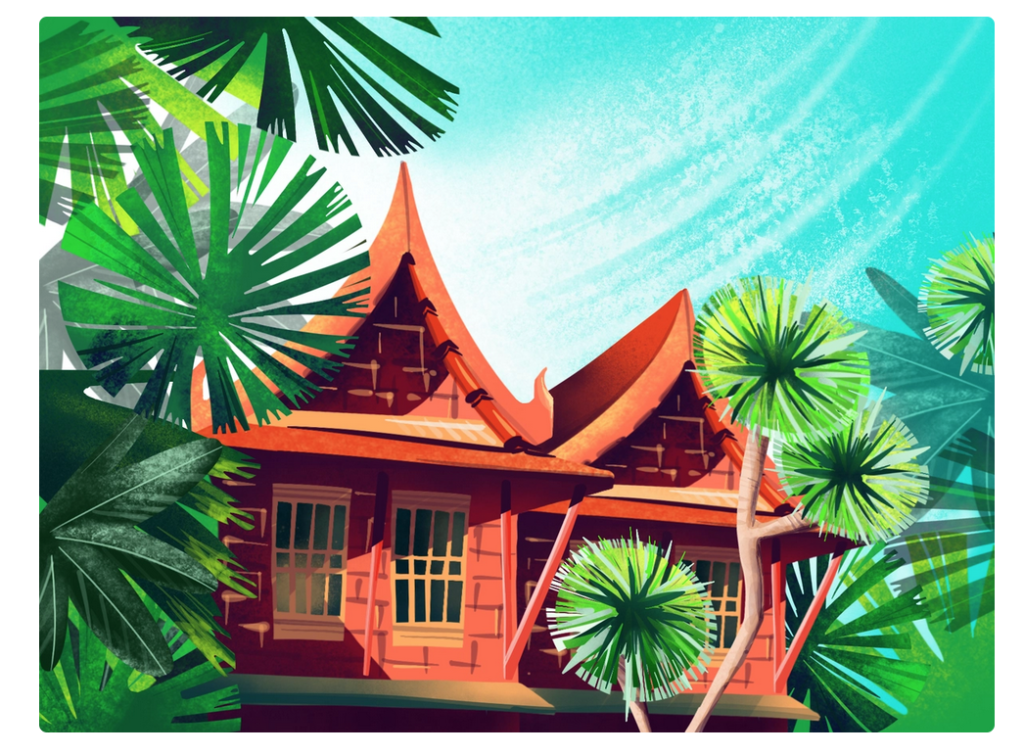
Basic Theories of Thai Massage
As already discussed, traditional Thai massage derives most of its foundation from theories, philosophies, and practices of ancient India as well as China. In addition, Thai medicine received a major influence from Theravada Buddhist culture. It has close associations with monastic traditions of Thai Theravada Buddhism. This historic amalgam of different ideas from different cultures forms the basis of Thai medicine.
According to the Thai expression of medicine, everything is made up of four basic elements that comprise Earth, water, wind, and fire. In a normal, harmonious, and healthy state, all four elements exist in a sense of proportion. The balance between these elements isn’t a static one. Rather, it’s dynamic and interactive. When a person falls sick, he or she suffers from the imbalance of these four elements.
Traditional Thai medicine considers human beings as distinct from anything else in the universe. In believing so, it contends that humans are a unique blend of the following three essences:
1.Human body
2.Energy
3.Citta (mind/heart)
According to Thai philosophy, humans are the result of a dynamic interplay between these three essences. Let’s have a detailed look at these essences of human beings.
- The first one, the human body, is the combination of all the physical features and attributes of a person. It comprises a unique mix of atoms that make a person. This part of a human can be seen, touched, and measured without a problem.
- The second essence of human beings is energy. It’s the most vital essence that holds and unites everything in place. From a Thai medical perspective, energy runs through the human body along distinct pathways known as sen. Moreover, the energy flowing through these sen coalesces and unites at distinct points along the pathways. These points are referred to as nadis. According to the Thai system, there are at least 72,000 nadis in the human body.
- The third essence is known as Citta. The word Citta comes from the Pali language, the language that holds the first written records of the original teachings of Lord Buddha. While the term Citta is often described as heart or mind, it has a much broader meaning. It refers to all the non-physical or metaphysical attributes of a person, such as feelings, emotions, desires, and aspirations. Citta forms the basis of our aspirations and commitments. Citta expresses itself through creativity, imagination for reality, fantasies, and dreams. Long story short, Citta is what sets us apart from a plethora of other living creatures.

The Three Doshas
The Thai medical theory considers three humors or doshas to be the root cause of each problem. These three humors are the following:
1.The Liver
2.The Wind
3.The Phlegm (mucous)
While everything on the face of the Earth contains four basic elements, only living things contain the doshas. A human being is primarily affected by only one dosha, though all of the three doshas are present in an individual. The specific and characteristic dosha of a person defines his or her personality. It also describes the constitutional picture of a person.
All three doshas derive their properties from one of the four elements. Earth and water define the characteristics of Phlegm, fire influences Bile, and air affects the Wind.
Phlegm has the firmness and stability of the Earth coupled with the changeability of water. Bile expresses the destructive and transformative energy of fire. Wind possesses the randomness and speed of Wind. According to traditional Thai medicine, a person’s age bears a significant influence on his or her doshas, health, and diseases.
From the birth of an individual to the age of 16, he’s primarily affected by Phlegm dosha. From age 16 until age 32, bile constitutes the major causative factor of diseases. For a person above 32, Wind dosha becomes the major causative factor.
From the birth of an individual to the age of 16, he’s primarily affected by Phlegm dosha. From age 16 until age 32, bile constitutes the major causative factor of diseases. For a person above 32, Wind dosha becomes the major causative factor.
Recognition of the Practice
The practice of traditional Thai massage has largely remained limited to monasteries, and monks were the only ones to understand and apply this massage technique. But in the past few decades, traditional Thai massage has gained huge popularity among the masses. As a result, there’s an ever-increasing number of people who want to use the technique as well as its practitioners. In the distant and rural areas of Asia, it’s still the monks who practice and perform the technique on people. In these areas, people continue to rush towards monasteries to receive the massage. It should be noted here that the purpose of traditional Thai massage in these areas largely remains the same, to cure ailments and suffering.
Contrary to the people of Asia where it’s considered a healing art, the Western world sees traditional Thai massage as a relaxation technique. The technique gained huge popularity among westerners, and it outnumbers the requests for the Swedish massage in most spas of the West. While correlation is not causation, we see that Thailand has become a health and relaxation hub in the world. It happened at the same time as traditional Thai massage gained popularity among the westerners.
Frequent travelers and tourists have certainly played a significant role in deciding such a fantastic fate of the massage technique. After World War II, Thailand became a sweet spot for tourists wanting to spend their holidays. Thailand has seen a flourishing growth in the number of tourists each year. At present, it’s one of the top 20 most visited countries in the world. As the tourism industry flourished in the country, Thai entrepreneurs saw an opportunity in establishing spas and massage parlors. Traditional Thai massage is the signature and iconic feature of these spas in Thailand.
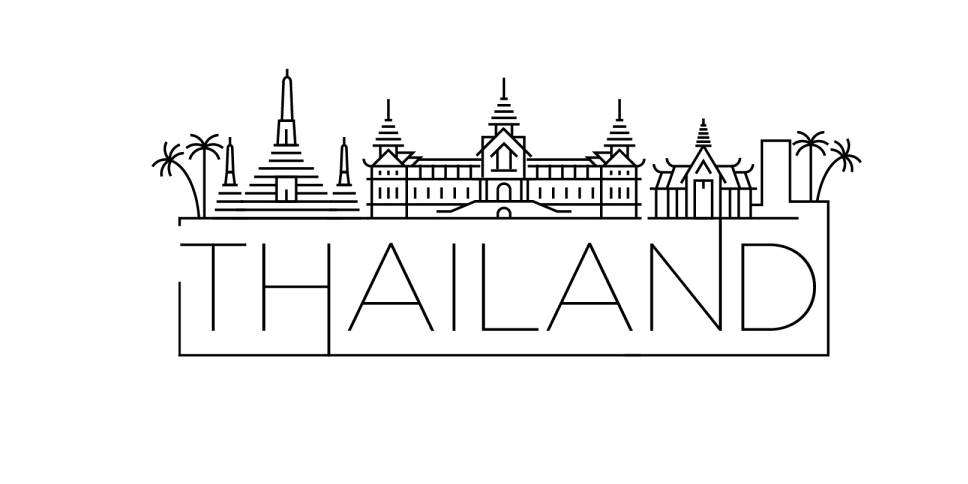
Traditional Thai Massage Training
As traditional Thai yoga massage is becoming increasingly popular in London, United Kingdom, the number of the best spa owners who want their staff trained in Thai massage is also increasing. It is important to have proper instructions as any faulty training is counterproductive. Since the practice is extremely different from the Western ones, it’s highly recommended that the training takes place in Thailand. However, the training is now being offered in the West too.
One of the greatest benefits of being trained in Thailand is that the Thai ministry of education regulates the training programs and massage schools that offer the training. As a result, it is more likely that the training and instructions are safe and highly accurate.
Certification programs and training schools in Thailand have English-speaking instructors, so there’s no language barrier. Spa professionals with experience in other massage techniques can earn the training certificate in as early as two weeks.
Most spa owners in the West send one of their professionals overseas to receive the training. After they’ve been trained in traditional Thai massage, they return and then teach the rest of the staff members.
Preparations
No particular preparations or fancy materials, such as expensive oils, are required for traditional Thai massage. The massage is performed on a floor mat which allows the practitioner to perform greater movements and put his or her weight on the client. Such a variety of movements are not possible to perform on a massage bed or table.
In most cases, the client remains fully clothed and the practice doesn’t require the use of lubricants, such as oils. A typical massage session comprises one to two hours. But sometimes, three hours or even more can be required based on the severity of the problem.
Precautions
As most westerners are accustomed to Swedish massage, traditional Thai massage can appear to be more vigorous than its counterparts. For some people, the pressure techniques used in traditional Thai massage can appear to be penetrating. But most clients can quickly adapt to it.
For frail, lean, and weak individuals, a skilled professional will be able to soften their muscles with care and ensure a better flow of energy through sen.
Final Thoughts
Traditional Thai massage has spread across the globe and gained the appraisal of the Western world and especially in United Kingdom. But the true scientific investigation into the phenomenon and mechanism remains limited. The evidence remains largely anecdotal, instead of coming from the research in the Western scientific standards.